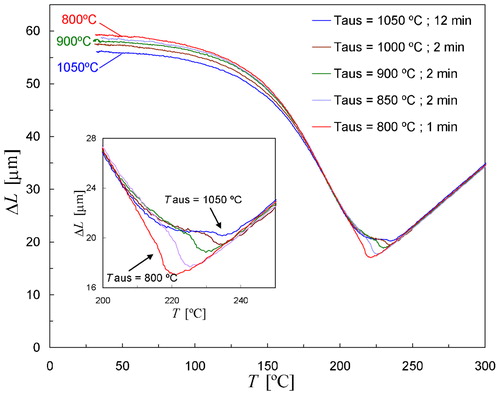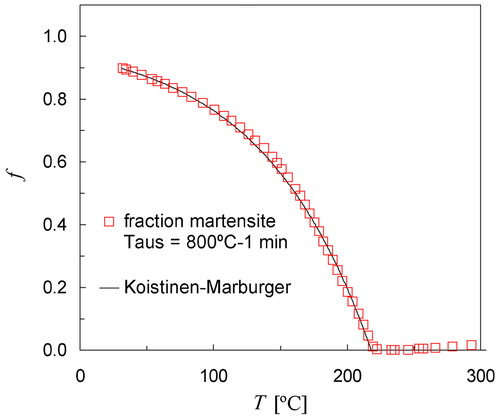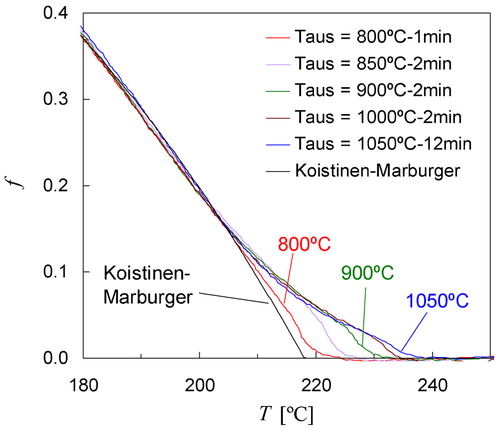Figures & data
Table 1. Chemical composition of steel Fe–0·80C/wt-%
Table 2. Experimental details and results of experiments with varying cooling rates
Table 3. Experimental details and results of experiments with varying austenitising treatments*
1. a measured dilatation as a function of temperature due to martensite formation during cooling of Fe–0·80 samples with different rates. Right-hand y-axis shows measured temperature difference between two thermocouples (ΔT) and b dilatometry data plotted against temperature corrected for thermal gradients
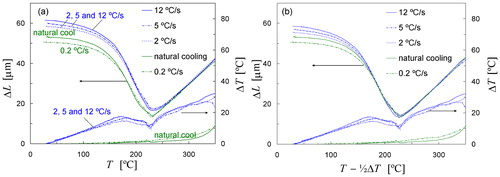
2. a dilatation due to tempering of fully martensitic sample at 180°C as a function of time: length decrease of about 2–2·5 μm in some tens of seconds and b dilatation as a function of temperature showing tempering characteristics during heating of samples which were made martensitic with different cooling rates as shown in
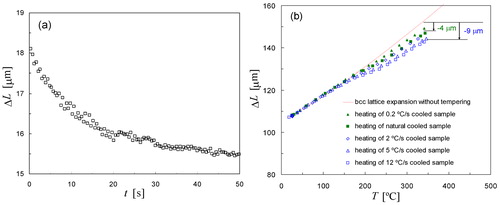
3. a measured dilatation as a function of temperature due to martensite formation during natural cooling (open squares). Solid lines represent thermal expansion of both austenite (fcc) and martensite (bcc); open circles describe dilatation of fully martensitic sample during heating and b experimental volume fraction of martensite as a function of temperature derived from Fig. 3a (open squares) can be described by KM equation (solid line) using TKM = 218°C, αm = 0·0122 K−1. Volume fraction of retained austenite at room temperature is approximately 0·10
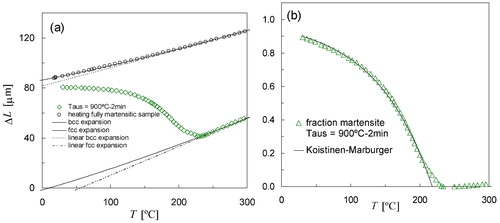
4. Change in length as a function of temperature due to martensite formation in Fe–0·80C during natural cooling of samples which were given different austenitising treatments. Inset shows magnification of dilatometry curves close to Ms temperature
